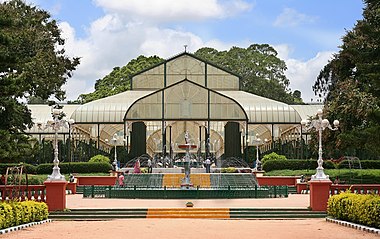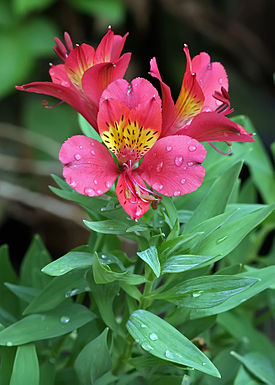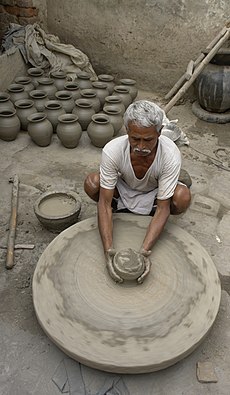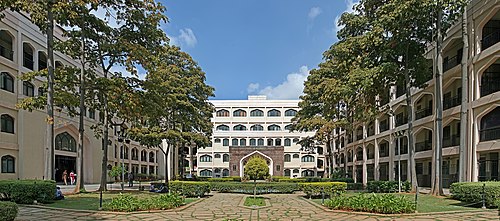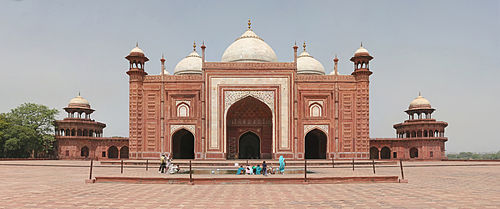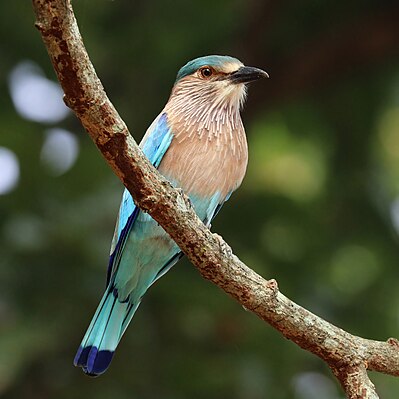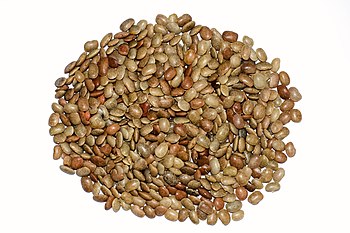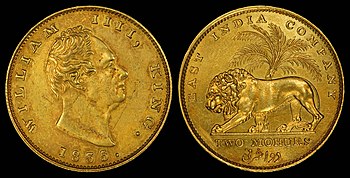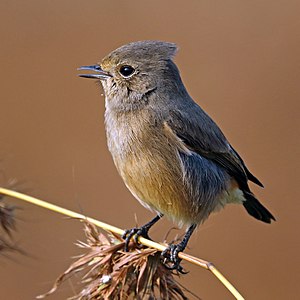Silicon Valley of India for its numerous
IT
Template:POTD/2014-07-15
Template:POTD/2014-08-23
Al-Ameen College of Pharmacy is a pharmacy college in
Bangalore, India. Established in 1983, it is under the purview of the Al-Ameen Educational Society.
Template:POTD/2014-08-28
The
mosque at the
Taj Mahal complex in
Agra, India. This red sandstone building, on the western side of the complex, faces the west side of the mausoleum. In the forefront is a
howz, meant for ablution. On the eastern side of the complex is the
jawab ("answer"), a mirror image of the mosque except for the missing
mihrab and different floor pattern; this
jawab was mainly intended for architectural balance. Both were constructed in 1643.
Template:POTD/2014-11-24
. She wrote The God of Small Things over a four-year period ending in 1996; it was published the following year and received positive international reviews, although in India the work was controversial. She has continued to write essays and articles, but has yet to publish another novel.
Template:POTD/2015-04-10
Template:POTD/2015-05-10
Kerala, India
. He has published numerous collections of poetry since his debut collection, Radha, in 1965.
Template:POTD/2016-01-12
Template:POTD/2016-04-13
. It is an extremely rare vagrant to Western Europe and the Aleutian Islands.
Template:POTD/2016-08-13
Template:POTD/2016-10-10
Odissi is an ancient
classical dance that originated in the
Hindu temples of
Odisha, India. Historically, it has been performed predominantly by women, and expressed religious stories and spiritual ideas, particularly of
Vaishnavism (Vishnu as
Jagannath), but also of other traditions such as those related to Hindu gods
Shiva and
Surya, as well as Hindu goddesses (
Shaktism). Modern Odissi productions by Indian artists have presented a diverse range of experimental ideas, culture fusion, themes and plays.
Odissi is learnt and performed as a composite of a basic dance motif called the
Bhangas (symmetric body bends, stance). It involves the lower, mid, and upper body as three sources of perfecting expression and audience engagement with geometric symmetry and rhythmic musical resonance.
Template:POTD/2016-11-16
wedding
and the honeymoon will end when the last bangle breaks.
Template:POTD/2017-01-15
A view of the
Taj Mahal from the south, featuring the
Charbagh garden. The mausoleum complex also includes subsidiary tombs, waterworks infrastructure, the small town of Taj Ganji, and a "moonlight garden".
Its origins and architecture have been extensively documented, covering both the circumstances of its commission and the cultural and historical influence of the Islamic
Mughal Empire in India.
Template:POTD/2017-01-28
before becoming independent in the 16th century.
Template:POTD/2018-07-24
An Indian merchant holding green
chickpeas (
Cicer arietinum). One of the earliest cultivated
legumes, chickpeas are ingredients in
a number of dishes around the world. India is the largest producer of this nutrient-dense food, accounting for 64% of global production in 2016.
Template:POTD/2018-10-19
Malay tiger
(D. affinis) and the white tiger.
Template:POTD/2019-11-02
coat. Only males possess
horns
Template:POTD/2019-11-26
The
Indian roller (
Coracias benghalensis) is a member of the bird family Coraciidae, the
rollers. It occurs widely from the Arabian Peninsula to the Indian subcontinent and is designated as
Least Concern on the
IUCN Red List. The bird is best known for the aerobatic displays of males during the breeding season. It is commonly found in open grassland and scrub forest habitats, and is often seen perched on roadside bare trees and wires, which give it a good view of the ground below where it finds its prey. Its diet consists mainly of insects such as beetles and grasshoppers, but also includes spiders, scorpions, amphibians and small reptiles. The largest population occurs in India, and several states in India have chosen it as their state bird.
This picture shows an Indian roller of the
benghalensis subspecies, photographed in
Kanha Tiger Reserve in the Indian state of
Madhya Pradesh.
Template:POTD/2020-02-16
The
Dharmaraya Swamy Temple is one of the oldest temples in
Bangalore, India. It is thought to be more than 800 years old and is built in the
Dravidian style, with a
gopuram, an ornate monumental entrance tower. Gods worshipped here include
Dharmaraya,
Krishna,
Arjuna,
Draupadi and
Bhima.
The
Karaga festival starts from the temple each year; the festival is dedicated to Draupadi, the most important female character in the Hindu epic, the
Mahabharata. Starting at midnight, a priest dressed as a woman carries an earthen pot filled with water and adorned with decorations several feet high on his head in procession through the town, preceded by hundreds of bare-chested, dhoti-clad, turbaned
Veerakumaras bearing unsheathed swords.
Template:POTD/2020-06-01
The
southern plains gray langur (
Semnopithecus dussumieri) is a species of
Old World monkey native to the Indian subcontinent. It is about 62 cm (24 in) tall and lives in groups in various forest habitats, feeding mainly on leaves, fruit and flowers in the
canopy, supplementing these with insects, gum, grasses, herbs and roots. The monkeys are considered sacred in India, and some are used by Hindu priests for religious purposes. They have adapted to living in close proximity to humans in urban settings; they are often fed by humans and accept cakes, millet, and other foods. The species is protected by law in India, but some are still persecuted for damaging crops, hunted for food and captured for pets.
This photograph of a female southern plains gray langur was taken in
Kanha Tiger Reserve, in the Indian state of
Madhya Pradesh. The park was created on 1 June 1955 and was designated a
tiger reserve in 1973.
Template:POTD/2020-09-15
Macrotyloma uniflorum, commonly known as horse gram, is a
legume native to tropical southern Asia. The plant grows from a rhizome, sending up annual shoots to a height of 60 cm (24 in). The flowers are cream, yellow or pale green and are followed by short pods. The seeds, pictured here, have been consumed in India for at least 4,000 years and are used both for animal feed and human consumption, including
Ayurvedic cuisine. In other tropical countries in southeastern Asia, and in northern Australia, the plant is grown mainly as a
fodder crop and for use as
green manure. It is a drought-tolerant plant, largely cultivated in areas with low rainfall.
Template:POTD/2020-09-27
are embedded. Pomegranate juice can be sweet or sour, but most fruits are moderate in taste. The juice has long been a popular drink in Europe and the Middle East, and is now widely distributed in the United States and Canada.
Template:POTD/2020-11-13
The
round ribbontail ray (
Taeniura meyeni) is a species of stingray in the family
Dasyatidae, found throughout the nearshore waters of the tropical
Indo-Pacific region. Reaching 1.8 m (6 ft) across, this large ray is characterized by a thick, rounded pectoral fin disc covered by small
tubercles on top, and a relatively short tail bearing a single venomous spine. The ray is well-camouflaged when lying on the seabed; it is largely nocturnal, and preys on
molluscs,
crustaceans and
bony fish. Mature females bear litters of up to seven pups, which are fed during gestation on "uterine milk", a product secreted by the walls of the
oviduct. This round ribbontail ray was photographed in
Lakshadweep, India.
Template:POTD/2020-12-13
The
mohur is a gold coin that was formerly minted by several governments, including those of British India. It was usually equivalent in value to fifteen silver
rupees. Gold mohurs issued by the British
East India Company or the Crown are valuable collectors' items, and sell in auctions for high prices. The double mohur (minted between 1835 and 1918), with a value of thirty rupees, is the highest-denomination circulating coin ever issued in India. The 1835 two-mohur coin above was minted in the reign of King
William IV, while the 1862 one-mohur coin below was minted in the reign of Queen
Victoria; both are now part of the
National Numismatic Collection at the
National Museum of American History.
Template:POTD/2021-01-30
K. T. Thomas (born 30 January 1937) is a former judge of the
Supreme Court of India, known for his strong opinions on Indian socio-political matters. He was selected as a district and sessions judge in 1977, and became a judge of the
Kerala High Court in 1985. A decade later, he was appointed a judge of the Supreme Court, on which he served until retiring in 2002. He was awarded the
Padma Bhushan by the Indian government in 2007 for services in the field of social affairs.
Template:POTD/2021-02-08
Template:POTD/2021-04-07
Danaus genutia, the common tiger or striped tiger, is a species of
brush-footed butterfly found in Sri Lanka, India, Myanmar, south-eastern Asia and Australia. It prefers areas of moderate to heavy rainfall, and typical habitats include scrubby jungle, deciduous forests and fallow land near habitations. The insect sequesters
toxins from plants, and advertises its unpalatability by having prominent markings and striking colour patterns. This adult male common tiger, of the subspecies
D. g. genutia, was photographed in
Kerala, India.
Template:POTD/2021-05-22
The
pied bush chat (
Saxicola caprata) is a small
passerine bird widely distributed in Asia. The males are black with white shoulder and vent patches, while the females are predominantly brownish. This species is
insectivorous, and like other chats hunts from a prominent low perch. This female pied bush chat was photographed in
Pench National Park, India.
Template:POTD/2021-07-23
Leptosia nina, known as the psyche, is a species of butterfly in the family
Pieridae (the sulphurs, yellows and whites), found in the Indian subcontinent, southeastern Asia, and Australia. It has a small wingspan of 2.5 to 5 cm (1 to 2 in). The upper side of the otherwise white forewing has a large, somewhat pear-shaped, black spot; this spot is also present on the underside which is scattered with greenish dots and speckles, sometimes arranged in bands. This
L. nina butterfly was photographed in
Kerala, India.
Template:POTD/2021-09-10
Papilio polymnestor, the blue Mormon, is a species of
swallowtail butterfly found in southern India and Sri Lanka. It is a woodland species, often seen on forest paths and near streams. The larvae feed on trees in the family
Rutaceae, such as citrus. Young larvae are green with white markings and position themselves on the upper surface of leaves, relying on their
cryptic colouring, which resembles bird droppings, for protection. Older larvae seek less conspicuous locations, and have a unique habit of securing their balance by weaving silk on the
substratum. This adult male
P. polymnestor butterfly was photographed in the Indian state of
Kerala.
Template:POTD/2021-09-20
The
Indian rhinoceros (
Rhinoceros unicornis) is a species of
rhinoceros that once ranged across the entire northern part of the
Indian subcontinent. As a result of habitat destruction and climatic changes, its range was gradually reduced such that, by the 19th century, it survived only in southern Nepal, northern
Uttar Pradesh, northern
Bihar, northern
West Bengal, and in the
Brahmaputra Valley in
Assam. The species's range has since shrunk further, and its habitat is surrounded by human-dominated landscapes, so that in many areas, it occurs in cultivated areas, pastures, and secondary forests. It is currently listed as a
vulnerable species on the
IUCN Red List. This adult male Indian rhinoceros was photographed on the banks of the
Gandaki River in Nepal.



